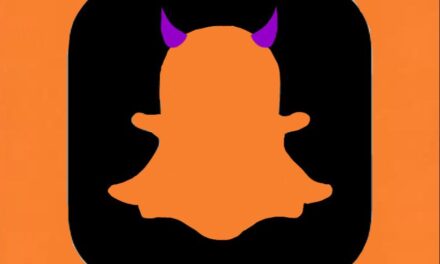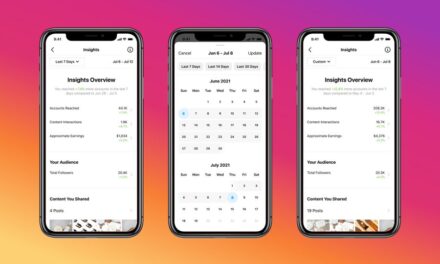Repost from: https://insights.newscred.com/how-to-capitalize-on-the-top-content-marketing-trends-of-2018/
The digital landscape is always changing, and that has a profound impact on content marketing. What worked last year, or even last month, may not today. That’s why content marketers must always be optimizing their strategies and preparing for the major changes that will inevitably come their way.
Here, the top five trends that we feel will be transformative for content marketers in 2018 – along with brand examples and tips for how you can realistically implement them into your program to drive the results that matter most to your company.
Big Rock Content
Big rock content is a piece of content so epic that your audience can’t help but pay attention to it. Big rock content can be a whitepaper, a short video, a feature film, an interactive piece of content, or a beautifully designed printed book or magazine.
It has to be really big, though; as a result, it’ll require substantial time, resources, and budget. But it’s worth it. Big rock content often results in major ROI.
To visualize how Big Rock content can come to life, consider the “big rock” as a central topic that you tie your content to. (This topic should be one you’re seeing to own, as a brand.) From there, plan the related pieces of content that you can produce from it. This creates a content ecosystem that answers every question your audience might have around this theme so they don’t have to look elsewhere.
Big rock content can build brand awareness from people sharing the content and media outlets covering it. If it’s a gated piece, it can drive leads. And if it’s tied to a product, it can drive sales.
In addition, big rock content also offers operational efficiencies for content marketing teams because you can break down your big rock into lots of smaller pieces. You can turn an e-book into blog posts, an infographic, a short video, and gifs.
Brand Example: Nike
Nike may have created the most ambitious piece of big rock content last year with “Breaking2,” when three elite marathoners tried to shatter the two-hour marathon mark. It was a major stunt that was two years in the making, but it paid off. More than 13.1 million people watched the livestream of the marathon on Twitter. National Geographic made a documentary about the attempt, which garnered 1.5 million views. On social media, Breaking2 received 2 trillion impressions.
You might be thinking, “There’s no way we could do something like that.” And that’s ok! The good news is that you don’t have to.
Brand Example: KLM
Your big rock content might look like KLM’s annual “Where to Fly” interactive, which highlights 50 travel destinations. Each year, it’s KLM’s top performing piece of content, with more than half a million visits, an average engagement time of more than five minutes, and above average referrals to the KLM site.
How to Get Started with Big Rock Content
First, brainstorm creative ideas and identify a major topic that is central to your brand’s core offerings or domain expertise.
Next, establish goals and KPIs for your big rock campaign. This is crucial to understanding what success looks like and how to achieve it. Consider questions like: What content formats do I want to experiment with? Where will the content live and how will I drive traffic to it? Is there a next best action I want to encourage readers to take via a CTA?
Lastly, it’s all about execution. Create a timeline and project plan, taking into account your budget, internal/external resources you can leverage, and how you’ll launch and promote this content. Don’t forget to cover how can you break down your big rock content into smaller, more digestible pieces that drive back to the larger content experience.
Video Content
As marketers, we all hear how we have to be creating videos if we want to reach consumers.
Beyond the simple motivation that “everyone’s doing it,” the stats speak for themselves. People consume more video content now than ever. They seek out videos on platforms like YouTube to find solutions to problems they regularly face – which presents a natural opportunity for you to create content that helps them understand your brand’s value proposition.
Video content has also proven to be a driver of key performance metrics, such as brand awareness, brand sentiment, engagement with your target audience, and leads generated.
Brand Example: Farmers Insurance
Take a look at the “Stranger Claims” video campaign from Farmers Insurance. It’s a clever way to introduce the brand to a Gen Z and millennial audience by playing off the viral “Stranger Things” Netflix series popular with that audience. This campaign also plays off the Farmers Insurance brand promise of “we’ve seen almost everything and know how to cover almost anything” when it comes to insuring drivers and homeowners. The videos have received tens of thousands of views on YouTube.
Brand Example: Goldman Sachs
Goldman Sachs repurposes videos from its internal “Talks at GS” series to gain a huge online following.
Through this series of interview-driven, 20- to 30-minute videos, Goldman Sachs unpacks business lessons from leading thinkers such as Bozoma Saint John, the Chief Brand Officer at Uber.
This TED Talks style of video production has earned Goldman Sachs more than 30 million plays on YouTube and drives back to its goal of powering the business growth and success of global brands.
How to Start Producing Video Content
Begin with the end in mind. Why are you creating video? What are you hoping it will do for your brand? What will make your audience stop and watch your video, and what do you want them to take away from that content experience? Consider your goals and KPIs, and that will influence the creative idea you might want to take for your video series, as well as how you create and promote it.
If you’re producing video for the first time, make sure you have the right mix of internal and external resources – creative-, equipment-, and time-related – to ensure your final result will be a high-quality piece of content.
Then, start crafting a timeline and launch plan as you prepare to start production.
Values-driven Content
We’re seeing a major shift where consumers want brands to take stands on social and political issues.
Part of this is due to our current climate, with many movements underway, from Times Up to Black Lives Matter to March for Our Lives. We can attribute part of this to millennials and Gen Z. They’re politically conscious and socially active and want to know that the brands they support share their values.
But it’s not just the younger generations. Two-thirds of consumers say that it is either “Somewhat Important” or “Very Important” for brands to take a stand on social/political issues, according to a recent survey by Sprout Social.
When done well, taking a stand can earn companies improved brand sentiment, customer loyalty, and increased sales.
Brand Example: Patagonia
Take Patagonia. You may remember how the outdoors company responded to President Trump cutting the funding to two public lands. Patagonia created an interactive film experience that urged people to take action and was vocal about its stance on social media. Even though its goal was to raise awareness about the cause, Patagonia also received major press coverage and saw sales spike afterward.
Brand Example: Ben & Jerry’s
Ben & Jerry’s is another brand that’s outspoken about a number of social issues, including climate change, voting rights, and LGBT equality. It could easily just blog about ice cream recipes and new flavors, but instead, it tackles social issues head-on with regular blog posts on these topics.
When Ben & Jerry’s promotes its stances on social media, there are some people who respond negatively and tell the company to stick to making ice cream. But there are many more loyal fans who buy Ben & Jerry’s because they believe in the company’s values.
How to Create Values-Driven Content
Consider the values tied to your brand’s ethos and central vision as to why your company exists. For Patagonia, the potential loss of two national monuments reflected its commitment to enabling an adventurous, outdoor lifestyle for consumers.
Think about how those brand values can intersect with public issues, paired with research and thought around the issues your target audience cares about. Brainstorm creative opportunities to highlight your values through a content experience.
Of course, there are risks associated with this type of marketing. While you might lose some people, if you’ve done a good job in your efforts to understand the values important to your audience, it’s likely those people aren’t your target audience, anyway.
There’s also the potential for your message to be seen as off-brand or too controversial. Take last year’s Pepsi campaign, which was quickly likened to an appropriation of the Black Lives Matter movement on social media.
It’s a cautionary tale for marketers. Because even if you are well-meaning and have the best intentions, your content could still go awry if you haven’t properly vetted it or thought it through.
Personalization
Personalization is the act of delivering the right content to the right person at the right time, in a way that feels customized. At the more complex end of the scale, brands are experimenting with fully personalized content hubs, though simple tactics like using a reader’s name in an email can also be highly impactful.
Personalization is still new, but brands are betting that it will hugely influence customer journeys. Because customers will receive content relevant to them, brands expect to see engagement increase. In addition, personalization can shorten the sales cycle and increase leads and sales.
Brand Example: USAA
One area that brands are exploring is personalization on content hubs. USAA recently relaunched its content hub, USAA Stories, so that it now has a personalized homepage, article sidebar, and recommended articles.
Brand Example: IKEA
Last year, IKEA received a lot of buzz when it launched the IKEA Place app. It uses augmented reality to let people see exactly how furniture will look in their homes. This helps people overcome a major hurdle to buy, which is knowing how a piece of IKEA furniture will look and fit in their own space.
It’s a fun and engaging experience that’s likely to increase purchases.
Brand Example: Fidelity
Our last example when it comes to content personalization is this financial checkupfrom Fidelity. The interactive quiz takes users through a line of questioning, from saving tendencies to their retirement strategy, and then provides a personalized content experience at the end of the quiz, based on that specific user’s inputs.
The quiz is a win-win for Fidelity and its audience. The company gathers data about its users and the audience receives content that is hyper-relevant to their personal financial situation.
How to Get Started with Personalization
Consider your budget and resources. Content personalization can be a big initiative, through which your team experiments with machine learning and AI. Or you could embrace a lighter, more budget-friendly approach with a personalization-light option like an interactive quiz.
Think about your promotional strategy: what your audience wants, paired with an understanding of your own goals and KPIs, which will lead to your distribution and promotion efforts.
Lastly, determine the user insights you might gain through this personalization effort– such as email addresses, demographic data and other inputs – and how you can store that information in a way that can feed back to your larger marketing efforts.
Content Transforming Other Business Functions
We’ve seen how effective content marketing can be in the marketing space. So it’s not surprising that it’s moving to other business functions.
And it makes sense, because content is core to other departments, too. Your sales team sends content to prospects in their outreach. Or when people apply to work at your company, they look for content on your website that gives them a glimpse into your company culture.
We’ve seen content marketing drive the most growth in sales, where it can increase lead quality and quantity, as well as boost revenue. And many HR departments are using content marketing to attract and retain top talent.
Brand Example: Bloomberg
Bloomberg’s Diversity & Inclusion department is using content marketing to attract and retain diverse talent and build a culture of inclusivity. The Bloomberg D&I blog is filled with articles that speak to those values, so anyone, whether prospective or current employees, can see exactly where Bloomberg stands on D&I issues and how that commitment cascades through the company’s recruitment and retention strategies.
Brand Example: Adidas
Adidas is another company using content marketing for HR purposes. In the past, Adidas was trying to use content marketing to serve all target audiences, from investors to journalists, employees, and potential candidates. It recently streamlined its strategy to focus on building company culture and attracting and retaining employees. Adidas’ content hub, GamePlan A, is all about tackling work life with an athlete’s heart. It’s seen a lot of success, especially in growing its LinkedIn channel, which is its most important.
How to Start Using Content to Transform Other Business Functions
Admittedly, this one may be the most difficult of our trends to implement because it requires a lot of cross-functional collaboration and buy-in from many stakeholders. Start by considering where content marketing makes sense. Some departments, like HR and sales, are more natural fits. Also identify your internal champions, the people you know who are bought into content marketing and believe that it works.
Because content marketing will be so transformative to other business functions, NewsCred will be discussing this in detail at our annual summit. This year’s ThinkContent New York will have the theme “ThinkContent: Transform Business,” and we’ll feature the most influential, senior-level marketers who are starting to make these changes within their own organizations to profoundly impact their businesses and bottom lines. For more information or to request an invite, please go to thinkcontent.newscred.com.















